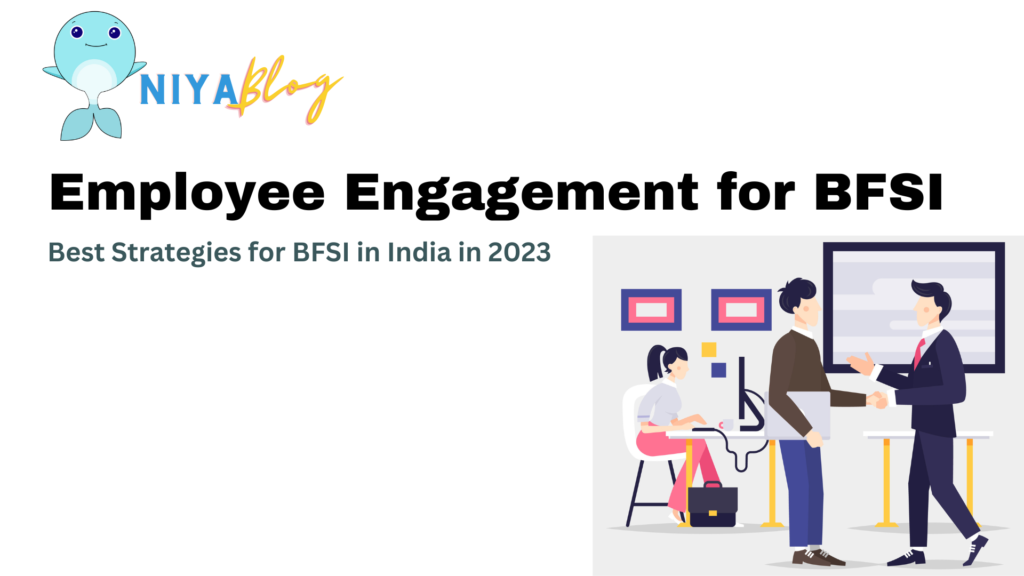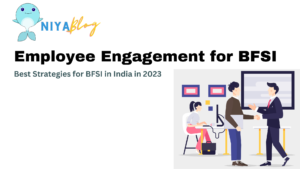
Image Source: Image by jemastock on Freepik
Table of Contents
- Introduction
- Challenges in the BFSI Sector
- Importance of Employee Engagement in the BFSI Sector
- Employee Engagement Statistics in the BFSI Sector
- Retention Risk in the Banking Sector
- Employee Engagement Levels in the Banking Sector
- Impact of Senior Leadership on Employee Engagement
- Trust in Senior Leadership in the Banking Sector
- Importance of Immediate Supervisors in Employee Engagement
- Employee Engagement Activities in the BFSI Sector
- Leveraging Employee Strengths
- Recognizing Employee Contributions
- Valuing Employee Opinions
- Building Trust in Senior Leadership
- Strengthening Relationships with Immediate Supervisors
- Employee Engagement Software for Banks
- Conclusion
- References
1. Introduction
The banking, financial services, and insurance (BFSI) sector in India plays a crucial role in driving the country’s economic growth. However, the industry faces significant challenges in managing its talent. According to Quantum Workplace research, only 50 percent of employees in the banking sector are highly engaged, and 35 percent are at risk of leaving the organization. Attracting, retaining, and engaging skilled employees has become increasingly difficult in a competitive job market.
To address these challenges, it is essential for leaders in the BFSI sector to prioritize employee engagement. By focusing on the employee experience, organizations can increase productivity, boost morale, and retain top talent. In this article, we will explore the importance of employee engagement in the BFSI sector in India and provide powerful strategies to improve engagement levels.
2. Challenges in the BFSI Sector
The BFSI sector in India faces unique challenges in managing employee engagement. One of the major challenges is the difficulty in branding the sector as an employer of choice. Both frontline and corporate employees may perceive the industry as less attractive compared to other sectors. Additionally, the industry-wide digital transformation has created a skills gap, making it challenging to retain employees amidst rapid technological advancements.
3. Importance of Employee Engagement in the BFSI Sector
Employee engagement is crucial in every industry, but it holds particular significance in the BFSI sector. With the rise of “the great resignation” and high competition for talent, organizations need to prioritize engagement to retain their employees. Higher engagement levels result in lower turnover rates, increased employee morale, and stronger business outcomes. In the BFSI sector, where turnover rates are projected to reach record highs, employee engagement is key to retaining top talent.
4. Employee Engagement Statistics in the BFSI Sector
To understand the current state of employee engagement in the BFSI sector, let’s examine some key statistics:
Retention Risk in the Banking Sector
According to research, 35 percent of employees in the banking sector are considered a retention risk. This means that over one-third of the workforce is at risk of leaving their current organization. However, organizations identified as a “Best Place to Work” have a lower retention risk of 24 percent. This highlights the importance of prioritizing employee engagement to reduce turnover rates.
Employee Engagement Levels in the Banking Sector
Only 50 percent of employees in the banking sector report high engagement levels. However, organizations identified as a “Best Place to Work” have significantly higher engagement levels, with 69 percent of banking employees reporting high engagement. These organizations regularly measure and analyze engagement, implement various engagement strategies, and have a strong employee value proposition.
Impact of Senior Leadership on Employee Engagement
Senior leaders play a critical role in driving employee engagement in the banking sector. The communication gap between customer-facing employees and corporate employees needs to be addressed to improve engagement levels. Branch employees often feel undervalued due to a lack of communication, recognition, and developmental opportunities. Engagement levels increase when employees believe their leaders prioritize and value them as the organization’s most important resource.
Trust in Senior Leadership in the Banking Sector
Unfortunately, only 35 percent of banking employees believe that senior leadership is leading their organization in the right direction. Trust in senior leadership has a significant impact on employee engagement. It is crucial for leaders to communicate effectively, providing clarity on business initiatives and important decisions. When employees understand the “why” behind these decisions, they are more likely to be engaged and supportive.
Importance of Immediate Supervisors in Employee Engagement
Senior leaders are not the only ones who impact employee engagement. Immediate supervisors also play a crucial role in shaping the employee experience. The relationship between employees and their managers directly affects their motivation, productivity, and engagement levels. Building strong relationships and effective communication between managers and employees is essential for maximizing engagement and performance.
5. Employee Engagement Activities in the BFSI Sector
To improve employee engagement in the BFSI sector, organizations should focus on specific activities that address the drivers of engagement. Here are some powerful strategies to consider:
Leveraging Employee Strengths
Allowing employees to utilize their strengths in their roles is a key driver of engagement. Clearly outline job duties and required professional skills during the hiring process. Regularly check in with employees to understand their perceptions and provide outlets for them to put their strengths to use. Invest in their skills, development, and career growth to ensure they feel valued and engaged.
Recognizing Employee Contributions
Meaningful recognition is vital for employee engagement. If employees feel appreciated for their contributions to the organization’s success, they are more likely to continue performing at a high level. Stay updated on employee initiatives and provide proper recognition. Leverage both public and private recognition, be specific in outlining what you appreciated, and highlight the value employees bring to the company.
Prioritizing Employee Well-Being
The BFSI industry is known for its demanding work hours and high levels of stress. It is crucial for leaders to prioritize employee wellness to ensure better engagement. Providing employees with a psychologically safe and healthy work environment can greatly improve their overall well-being. Companies like Deutsche Bank have successfully implemented comprehensive wellness programs that cover mental, physical, financial, and social well-being. HR leaders can consider implementing corporate wellness plans, advocating for mental health, and promoting lifestyle changes among employees to prioritize wellness.e
Involving Employees in Decision Making
Employees in the BFSI industry are highly skilled and driven, and involving them in decision-making processes can greatly enhance their engagement. By decentralizing decision-making tasks and delegating them to competent employees, leaders can make employees feel valued and empower them to contribute to the company’s success. This strategy not only benefits employees but also brings fresh perspectives and ideas to the table, leading to greater innovation and efficiency.
Building Trust in Senior Leadership
Senior leaders should prioritize transparent communication about business initiatives and important decisions. Outline the “why” behind these decisions and create a two-way communication model that welcomes questions from employees. Take employee input into account and keep them updated on key metrics and progress towards goals. By fostering trust in senior leadership, employees are more likely to be engaged and committed to the organization’s success.
Strengthening Relationships with Immediate Supervisors
Managers have a significant impact on employee engagement. Help managers build strong relationships with their team members by promoting open communication and providing support. Encourage regular one-on-one meetings to discuss engagement and performance. By fostering a positive relationship between employees and their immediate supervisors, you can maximize their engagement and productivity.
Implementing a Mentoring System
The BFSI industry is highly competitive, and it can be overwhelming for new hires or those trying to advance in their careers. Implementing a mentoring system can greatly improve employee engagement in this industry. Mentors with industry experience can provide guidance and support to employees, helping them navigate their career paths. Mentoring relationships also foster strong bonds and create a sense of belonging, which is crucial for employee engagement. Companies should encourage and facilitate mentorship programs to support employees’ growth and development.
Harnessing the Power of Digitalization
Digitalization has transformed the way businesses operate, and the BFSI industry is no exception. By leveraging AI-driven tools and technologies, HR leaders can streamline HR processes and enhance employee engagement. These tools can help manage engagement, performance, and productivity more efficiently, especially in remote work environments. Implementing digital employee engagement tools such as rewards and recognition platforms, employee benefits programs, pulse surveys, and employee wellness apps can significantly improve engagement levels and create a positive employee experience.
Implementing CSR (Corporate Social Responsibility) Initiatives
Research has shown that a significant percentage of millennials actively seek employers whose CSR values align with their own. Therefore, leaders in the BFSI industry should not underestimate the power of giving back to society. Implementing CSR initiatives can create a sense of purpose and meaning for employees, leading to higher levels of engagement. Some examples of CSR initiatives in the BFSI industry include forming meaningful relationships with the local community, contributing to social causes, supporting NGOs, and establishing green HRM initiatives. It is also important to reward and recognize employees who actively participate in CSR activities.
6. Conclusion
In the competitive landscape of the BFSI sector in India, employee engagement is crucial for attracting, retaining, and maximizing the potential of top talent. It is essential for senior leaders and immediate supervisors to play an active role in fostering engagement and building trust with their employees. By implementing these powerful strategies – leaders can create a positive and engaging work environment. These strategies will not only improve employee satisfaction and well-being but also contribute to the overall success of the organization in the highly competitive BFSI industry in India in 2023.
Engagement is an ongoing process that requires continuous evaluation, adjustment, and improvement. By making it a priority, the BFSI sector in India can create a highly engaged workforce that drives success in the industry.
7. References
Bureau of Labor Statistics. (n.d.). Retention Rate. https://www.bls.gov/








2 comments
Great article talking about the challenges in Banking & finance sector and Strategies’ for HR leaders for employee engagement!
Thanks Mukta!
Comments are closed.